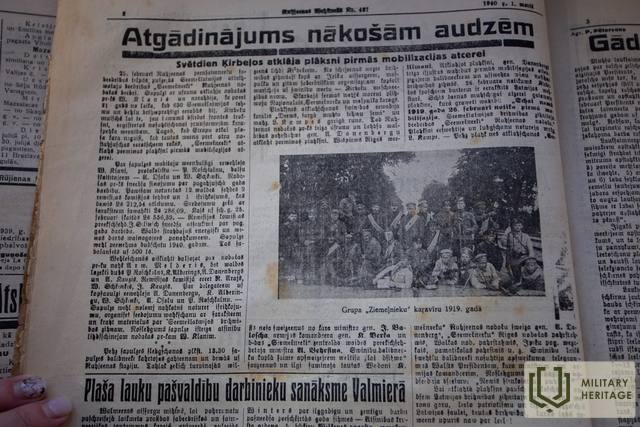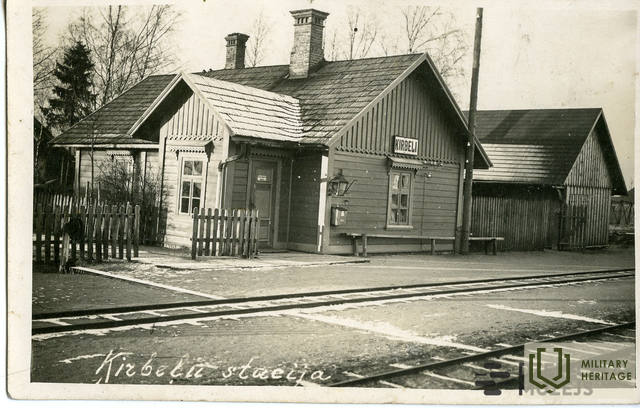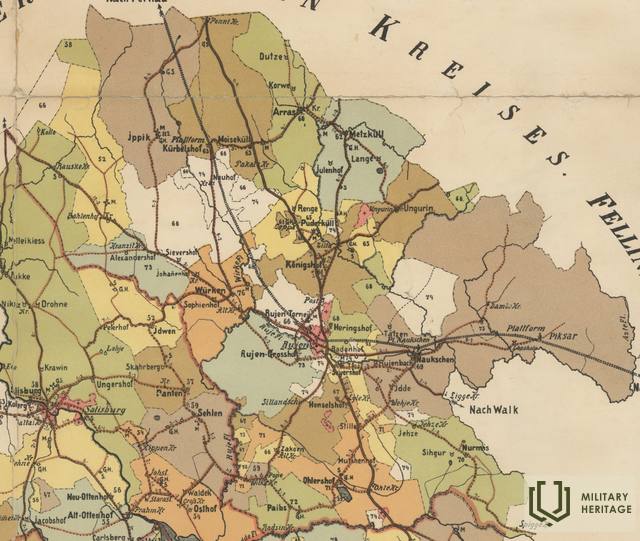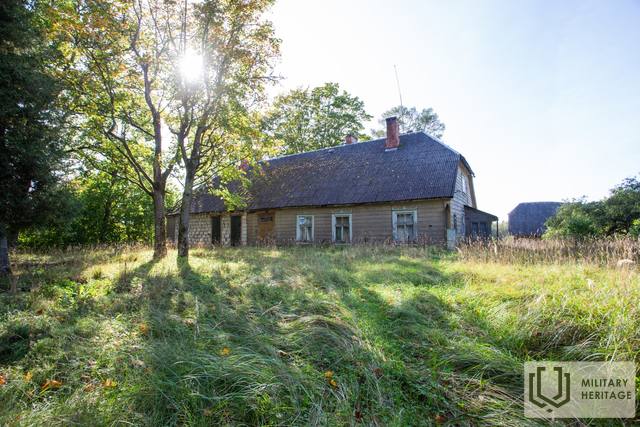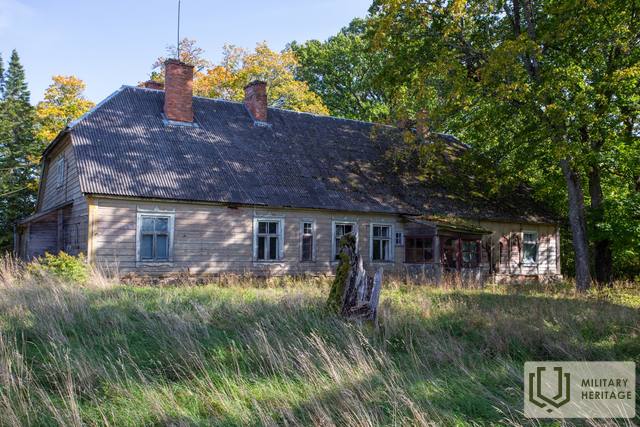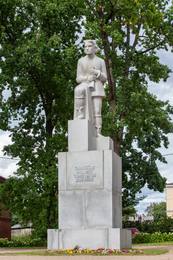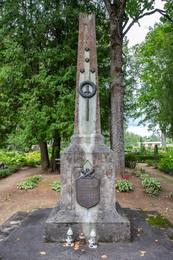Fragment from the founding of the Northern Latvian Army on the Rūjiena side
The North Latvian Army was a Latvian military formation during the Latvian War of Independence, which was formed from 3 February to 31 March 1919 in the territory of Estonia and the Northern Vidzeme regions liberated by the Estonian Army. Until July 1919, the brigade was subordinate to the Estonian Armed Forces Headquarters and the Commander-in-Chief of the Estonian Army in terms of logistics and operations. It was then merged with the South Latvian Brigade, forming the Latvian Army.
Agronomist Murītis was among the passengers who sailed from Liepāja to Rēveli (Tallinn) on the legendary ship "Maiga" from the early days of Latvian independence on January 12. The events related to the trip are described in his memoirs by an active participant, agronomist Eduards Duņens.
On January 15, the "Maiga" docked in Revele, and on the same day Murītis and Dunens visited the Latvian consul in Estonia, Rev. Jānis Ramanis, who informed them that the Estonian troops had already liberated five Latvian parishes and that a person was needed to whom a representative of the troops could turn. Thus, Murītis, who had authority as a member of the People's Council, came as if summoned.
Agronomist Murītis, according to his powers, could "operate in the liberated territory of Northern Latvia, and do whatever he finds necessary, hire assistants and appoint officials in parishes where necessary."
After receiving permits, the Rūjien people traveled by Estonian military transport train to Meizekull (Moisekull) and then further to the headquarters of the Estonian 6th Regiment at Ķirbeni (Ķirbeļi) station. Since Murītis had permission to organize armed units to fight the Red Riflemen, the Estonians gave him 5 rifles and ammunition, one of which went to Murītis. Thus, on January 16, the foundations of the Northern Latvian Army were laid. Officially, the agreement between Latvia and Estonia on the formation of the Northern Latvian troops was signed on February 18.
At the meeting of parish representatives, Murītis was elected as the administrator of all the manors that had been abandoned by their managers. Until the establishment of the Civil Administration of Northern Latvia, Pēteris Murītis was the official representative of the Latvian state in the liberated territory of Northern Latvia.
Eduards Duņēns has described the difficult situation in the Rūjiena area and Murītis's versatile activities in helping to organize commandant's offices and facilitating mobilizations for the Northern Latvian Army. It was in Ķirbeļi on February 26 that the young men drafted into the first mobilization from the liberated parishes around Rūjiena gathered. On the day of mobilization - February 26, 16 officers and 615 soldiers and instructors reported. Among those drafted into this mobilization was Pēteris Murītis' younger brother, later a knight of the Lāčplētis War Order, Alfrēds Murīts (1899 - 1984).
During the Latvian War of Independence, Pēteris Murītis contributed to the liberation of Northern Latvia through his activities and often found himself in direct danger of death.
Dunen E. The Freedom Struggles of Northern Latvia. London Newspaper, No. 706, January 1, 1960.
Dunēns E. London Newspaper No. 706, January 1, 1960.
Cavaliers of the Lāčplēsis Military Order. Biographical Dictionary. Riga, 1996, pp. 360-361.
Tālis Pumpuriņš, Cēsis History and Art Museum
Related timeline
Related topics
Related objects
Monument “Tālavas taurētājs”
Located in Rūjiena Center Square.
The three-meter-high image of an ancient Latvian guard soldier, carved from gray Finnish granite, called the “Tālavas trumpeter”, is placed on a three-meter-high granite pedestal, but the total height of the monument reaches 7.5 meters. In the initial sketches and models, K. Zemdega had placed a sword in the warrior’s hands, which was later replaced with a trumpet. The monument was unveiled on August 15, 1937.
This monument reflects the difficult situation in the formation of our state and army, as well as the assessment of these events. Immediately after the proclamation of the Latvian state, the Red Army invasion began and the provisional government of Kārlis Ulmanis found refuge in Liepāja. In February 1919, with the help of the Estonian army, the liberation of Latvia from the north began and the first mobilizations of the Latvian troops being formed in Tērbatas took place in the Rūjiena area, which, under the command of Colonel Jorģis Zemitāns, became the North Latvian Brigade. The North Latvian Brigade fought not only against the Bolsheviks, but also against the Landeswehr and the Iron Division in the battles of Cēsis. The North Latvian soldiers mobilized in the Rūjiena area also fought in subsequent battles of the War of Independence. After the war, the main laurels of victory went to General Jānis Balodis and the South Latvian Brigade commanded by him, but the North Latvian Brigade was often forgotten. The planned monument to the North Latvian Brigade in Rūjiena also took a long time to be created, and the monument, unveiled in 1937, was officially promoted as a monument to the liberation of the Rūjiena region and in memory of the fallen soldiers, without mentioning that all the regiments that were part of the North Latvian Brigade had their beginnings in Rūjiena.
The monument is not only a popular tourist attraction for Latvian and Estonian tourists, which is to some extent a starting point for visiting several other War of Independence memorial sites in Rūjiena, but the "Tālavas tauretājs" is also a stopping point for visits by Estonian and Latvian state and local government officials of various levels.
The Rūjiena Liberation and Fallen Soldiers Monument, more commonly known as the "Tālavas tauretājs" (Far-away Horner), was included in the list of state-protected cultural monuments on October 29, 1998 as an art monument of national importance (monument protection registration number 4522).
Monument to the soldiers who fell in the War of Independence
Located in the Bertulis Cemetery.
A monument to the soldiers who fell in the Latvian War of Independence can be seen.
Unveiled on August 4, 1934. The monument was built according to the design of Teodors Šķiņķis and Ludis Švalbe.
On the front of the monument, which symbolizes the triumph of victory, are attached a bronze sword, an oak leaf wreath, and four stars (auseklīši), symbolizing the four historical regions of Latvia – Vidzeme, Kurzeme, Zemgale, and Latgale.
On the other side, symbolizing the path of past suffering, a bronze cross is attached to the obelisk, which was originally wrapped in a crown of barbed wire. The barbed wire used for the crown was brought from Death Island.
The monument was restored in the summer of 1989, and all the bronze parts were made from scratch.




